Importance of Melt Flow Direction during Injection Molding on Polymer Heat Sinks’ Cooling Efficiency
Abstract
:1. Introduction
2. Materials and Methods
2.1. Geometry of Tested Heat Sinks
2.2. Measurement Description
3. Measurement Uncertainty Analysis
4. Results
4.1. Temperature Comparison
4.2. Heat Flow Comparison
5. Conclusions
Author Contributions
Funding
Institutional Review Board Statement
Informed Consent Statement
Data Availability Statement
Conflicts of Interest
References
- Brožová, T.; Bartuli, E.; Raudenský, M. Condensation on the outer surface of polymer hollow fiber heat exchangers and its influence to the heat transfer. Eng. Mech. 2018, 24, 117–120. [Google Scholar] [CrossRef] [Green Version]
- Kůdelová, T.; Kroulíková, T.; Astrouski, I.; Raudenský, M. The influence of the fibres arrangement on heat transfer and pressure drop of polymeric hollow fibre heat exchangers. Acta Polytech. 2020, 60, 122–126. [Google Scholar] [CrossRef]
- Raudenský, M.; Astrouski, I.; Brožová, T.; Bartuli, E. Flexible polymeric hollow fiber heat exchangers for electronic systems. In Proceedings of the 15th IEEE Intersociety Conference on Thermal and Thermomechanical Phenomena in Electronic System (ITherm), Las Vegas, NV, USA, 31 May–3 June 2016; pp. 1143–1147. [Google Scholar] [CrossRef]
- Landsecker, K.; Bonten, C. Investigation on the thermoformability of heat conductive plastics. AIP Conf. Proc. 2019, 2055. [Google Scholar] [CrossRef]
- Guo, Y.; Zuo, X.; Xue, Y.; Tang, J.; Gouzman, M.; Fang, Y.; Rafailovich, M.H. Engineering thermally and electrically conductive biodegradable polymer nanocomposites. Compos. Part B Eng. 2020, 189. [Google Scholar] [CrossRef]
- Chen, L.; Hou, X.; Song, N.; Shi, L.; Ding, P. Cellulose/graphene bioplastic for thermal management: Enhanced isotropic thermally conductive property by three-dimensional interconnected graphene aerogel. Compos. Part A Appl. Sci. Manuf. 2018, 107, 189–196. [Google Scholar] [CrossRef]
- Li, J.; Li, X.; Zheng, Y.; Liu, Z.; Tian, Q.; Liu, X. New underfill material based on copper nanoparticles coated with silica for high thermally conductive and electrically insulating epoxy composites. J. Mater. Sci. 2019, 54, 6258–6271. [Google Scholar] [CrossRef]
- Liu, Z.; Li, J.; Liu, X. Novel functionalized BN nanosheets/epoxy composites with advanced thermal conductivity and mechanical properties. ACS Appl. Mater. Interfaces 2020, 12, 6503–6515. [Google Scholar] [CrossRef] [PubMed]
- Marchetto, D.B.; Moreira, D.C.; Ribatski, G. A review on polymer heat sinks for electronic cooling applications. In Proceedings of the 17th Brazilian Congress of Thermal Sciences and Engineering, ABCM, Águas de Lindóia, SP, Brazil, 25–28 November 2018; Available online: http://abcm.org.br/anais-de-eventos/CIT18/0394 (accessed on 8 February 2021).
- Smith, M.; Kim, S.; Lambert, A.; Walde, M.; Lindahl, J.; Mungale, K.; Kunc, V. Maximizing the Performance of a 3D Printed Heat Sink by Accounting for Anisotropic Thermal Conductivity During Filament Deposition. In Proceedings of the 18th IEEE Intersociety Conference on Thermal and Thermomechanical Phenomena in Electronic Systems (ITherm), Las Vegas, NV, USA, 28–31 May 2019; Lindahl, J., Mungale, K., Eds.; pp. 626–632. Available online: https://ieeexplore.ieee.org/document/8757285/ (accessed on 8 February 2021).
- Hussain, A.; Freegah, B.; Khalaf, B.; Towsyfyan, H. Numerical investigation of heat transfer enhancement in plate-fin heat sinks: Effect of flow direction and fillet profile. Case Stud. Therm. Eng. 2019, 13. [Google Scholar] [CrossRef]
- Wiriyasart, S.; Naphon, P. Heat spreading of liquid jet impingement cooling of cold plate heat sink with different fin shapes. Case Stud. Therm. Eng. 2020, 20. [Google Scholar] [CrossRef]
- Ali, Z.; Gao, Y.; Tang, B.; Wu, X.; Wang, Y.; Li, M.; Hou, X.; Li, L.; Jiang, N.; Yu, J. Preparation, properties and mechanisms of carbon fiber/polymer composites for thermal management applications. Polymers 2021, 13, 169. [Google Scholar] [CrossRef] [PubMed]
- Yu, K.; Yuan, T.; Zhang, S.; Bao, C. Hypergravity-induced accumulation: A new, efficient, and simple strategy to improve the thermal conductivity of boron nitride filled polymer composites. Polymers 2021, 13, 459. [Google Scholar] [CrossRef] [PubMed]
- Grundler, M.; Derieth, T.; Heinzel, A. Polymer compounds with high thermal conductivity. AIP Conf. Proc. 2016, 1779. [Google Scholar] [CrossRef] [Green Version]
- Incropera, F.P.; Dewitt, D.P.; Bergman, T.L.; Lavine, A.S. Fundamentals of Heat and Mass Transfer, 6th ed.; John Wiley & Sons: New York, NY, USA, 2007. [Google Scholar]





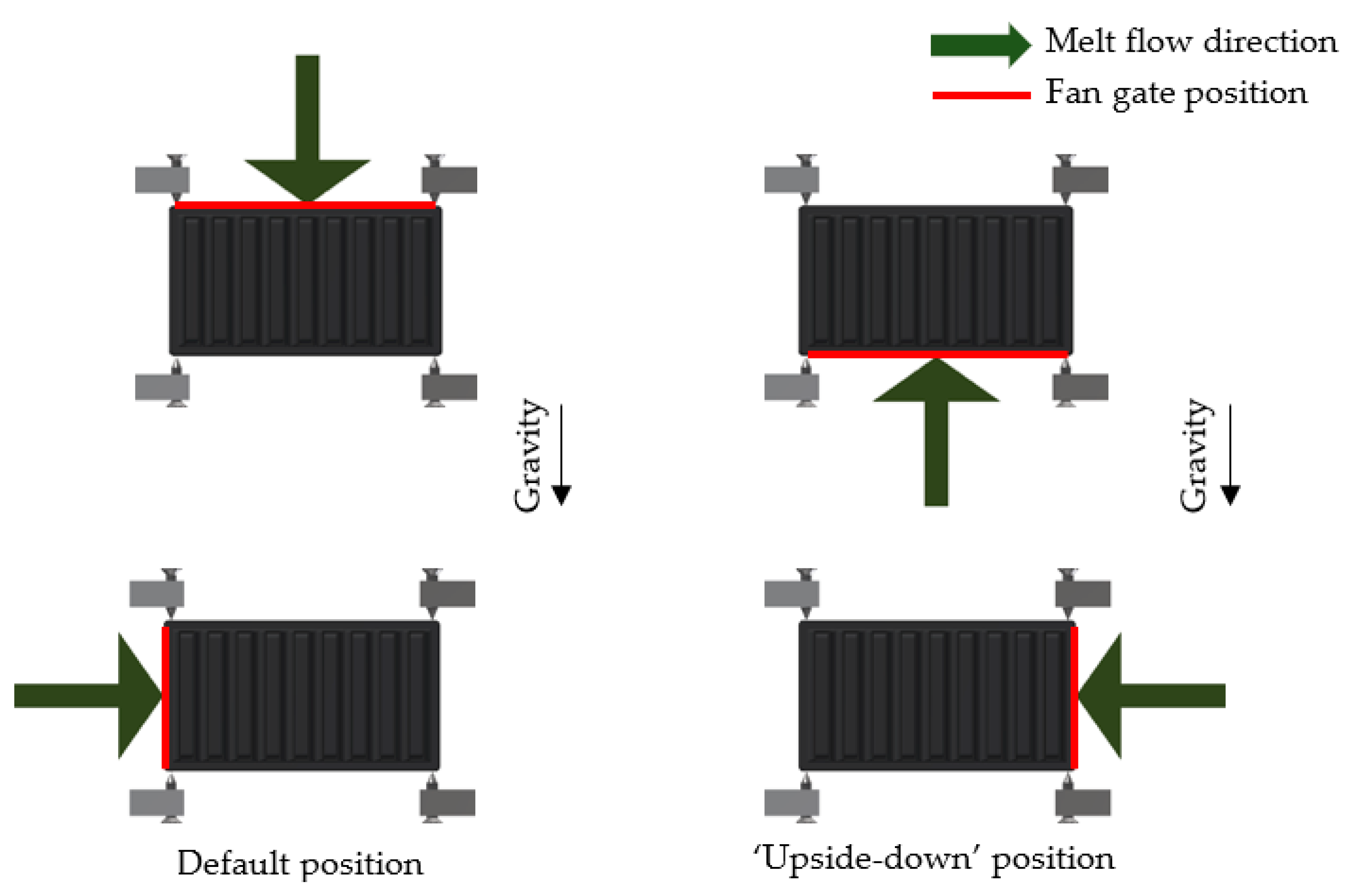

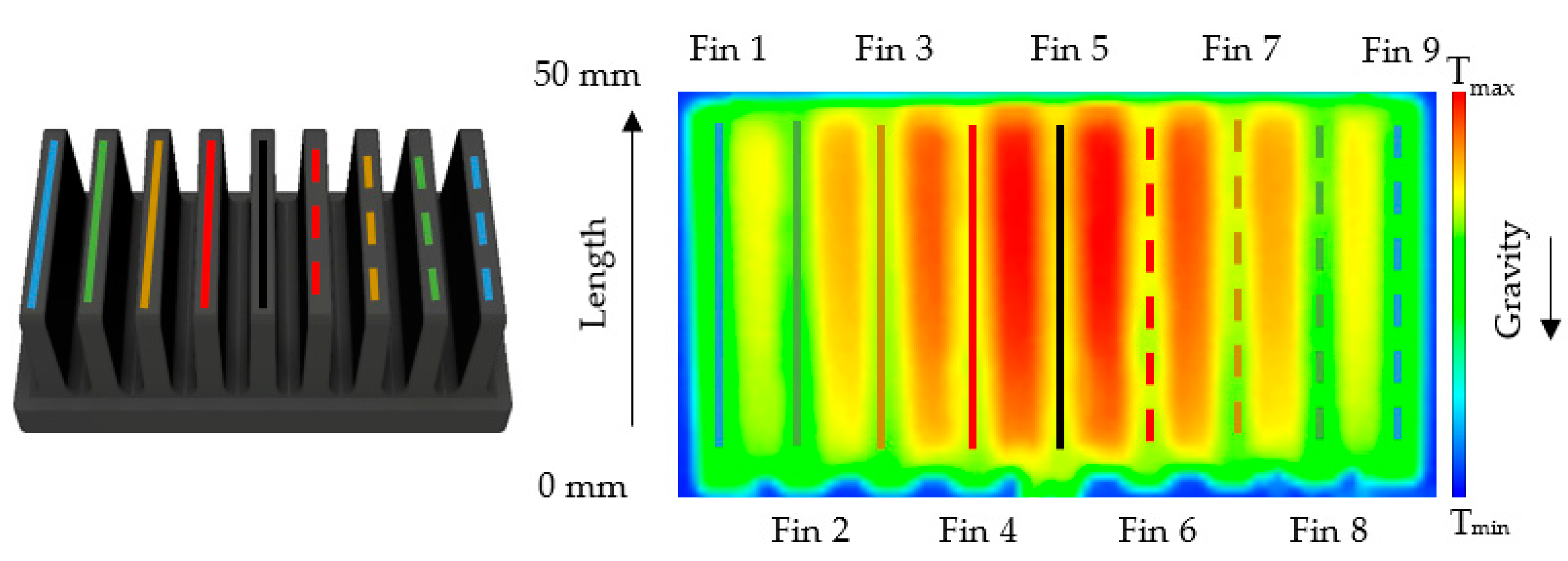
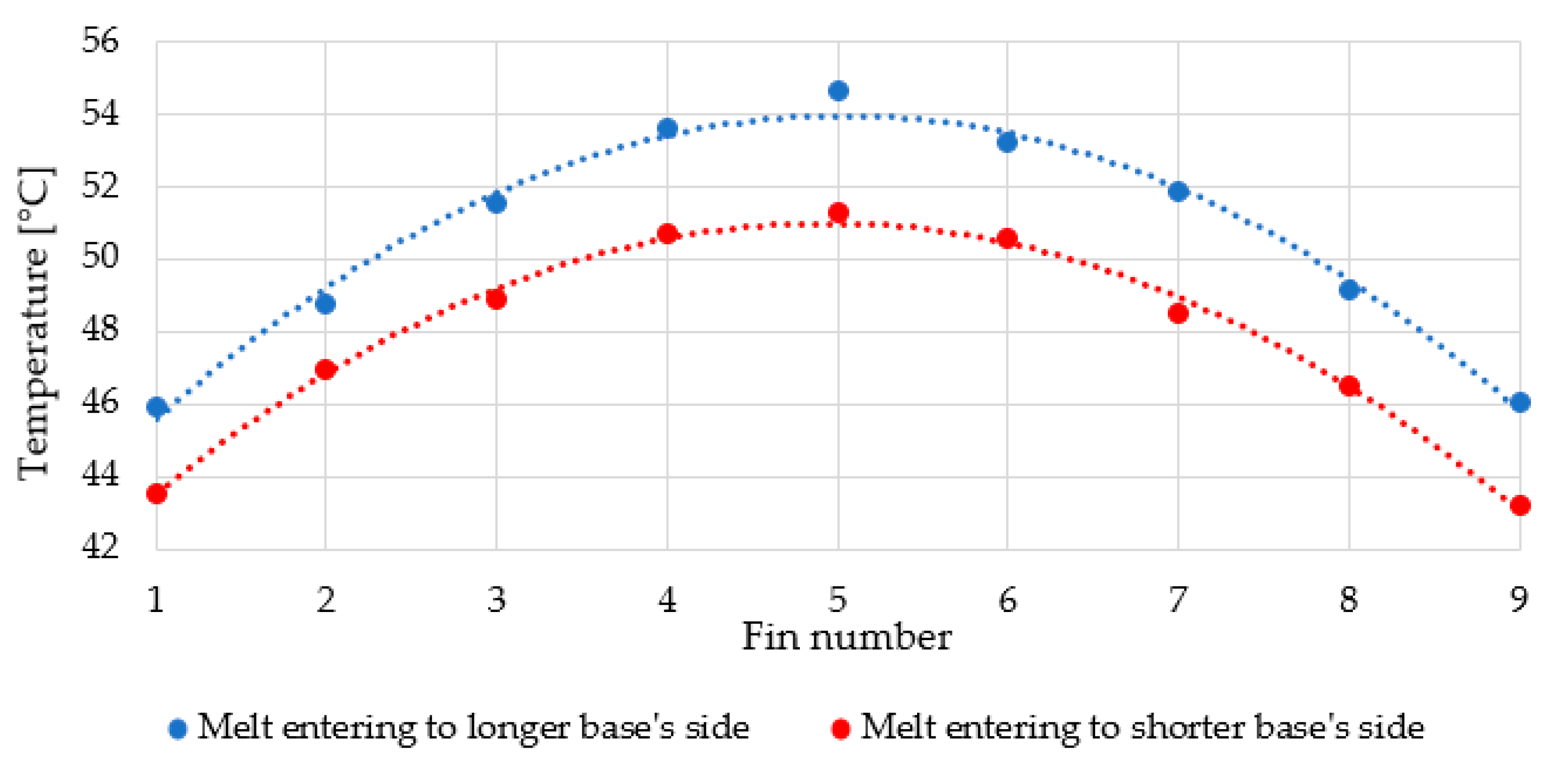

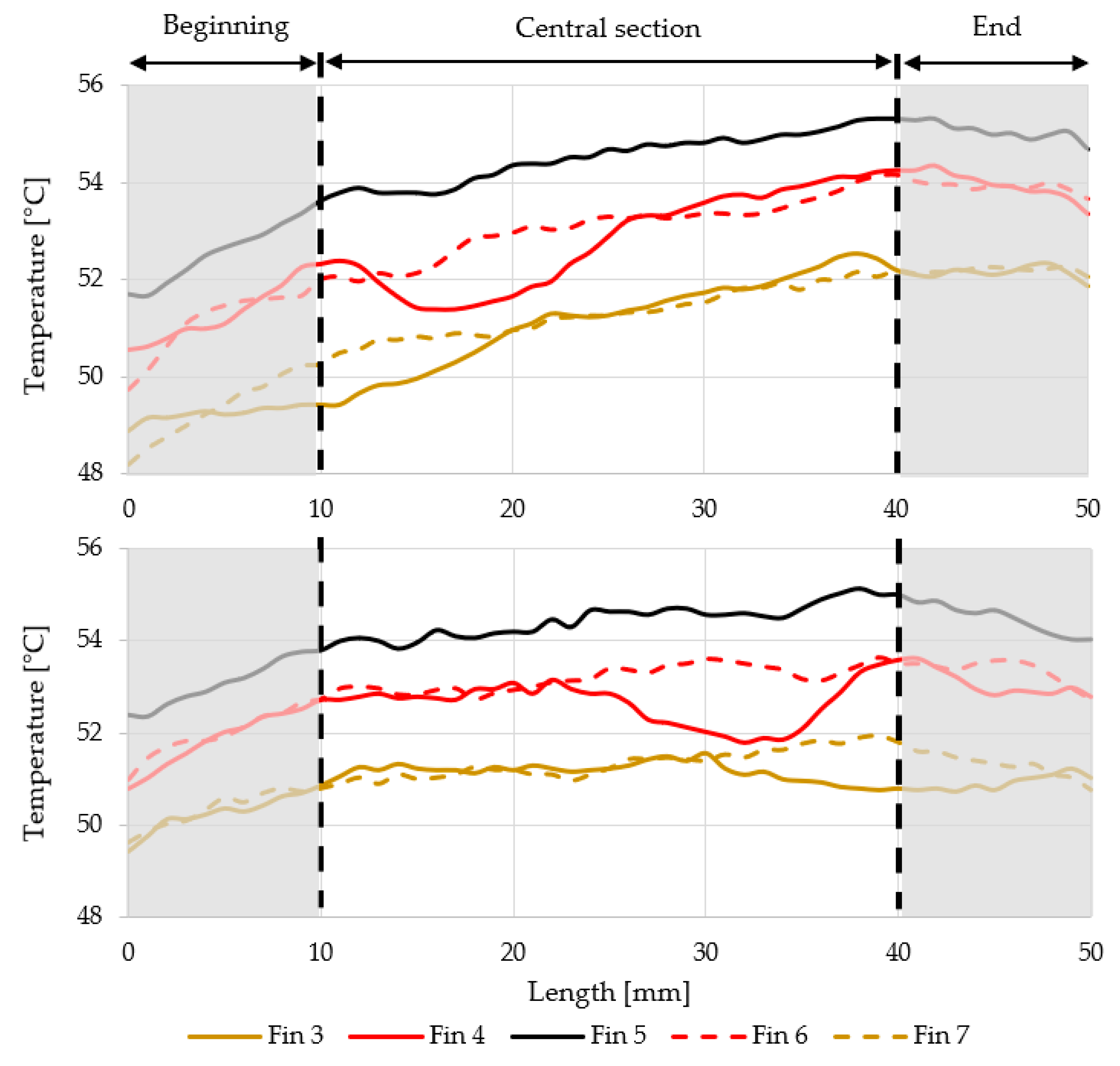
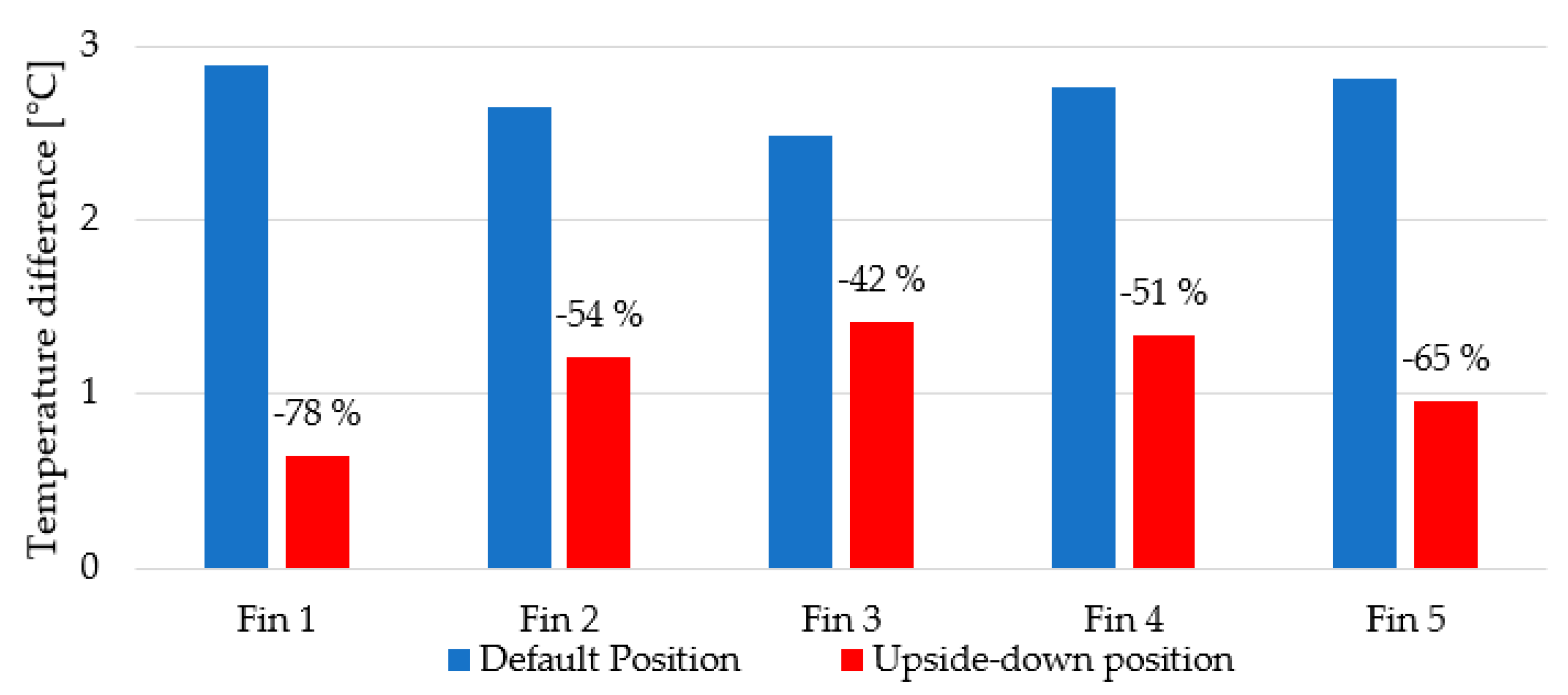
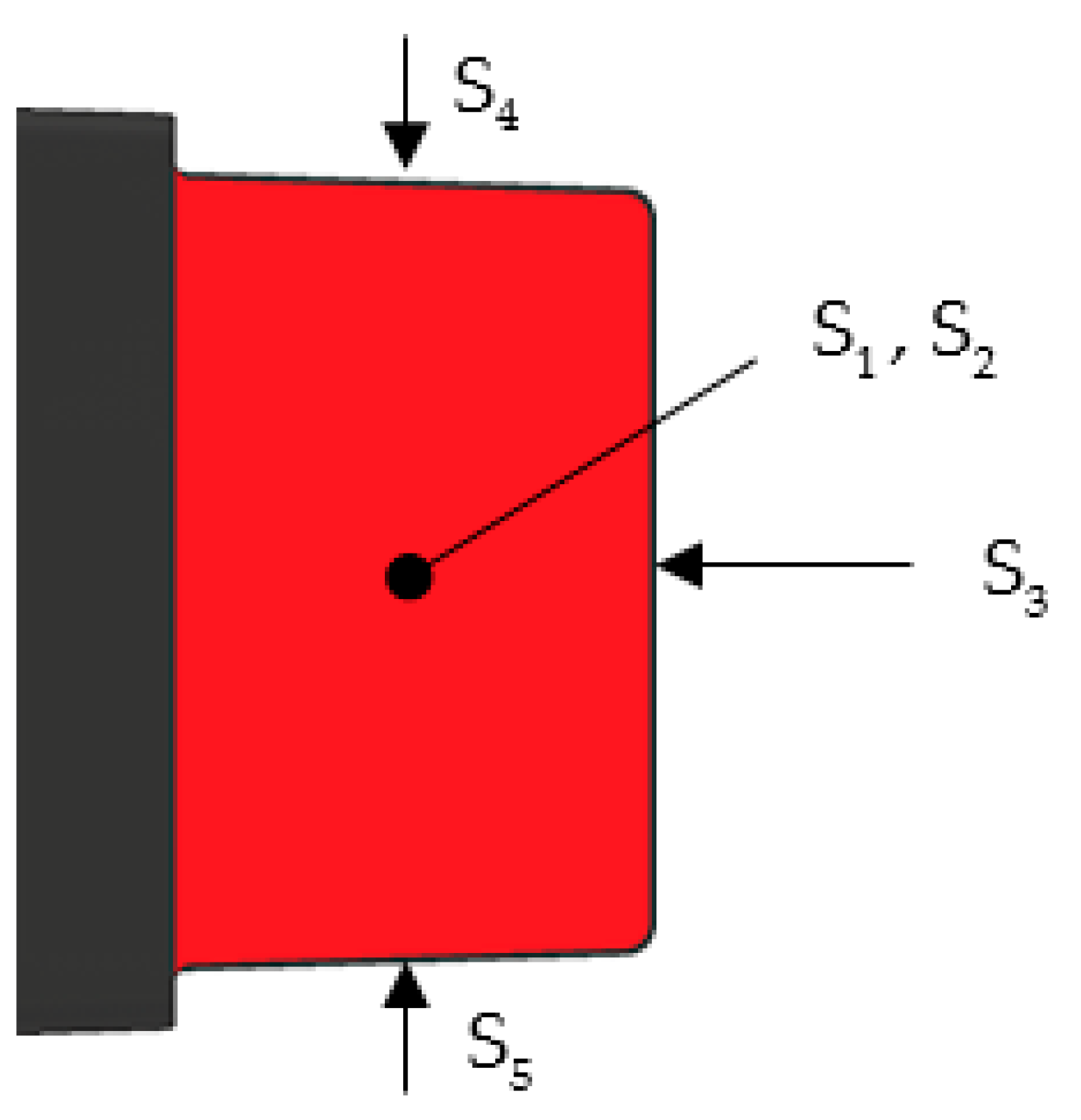


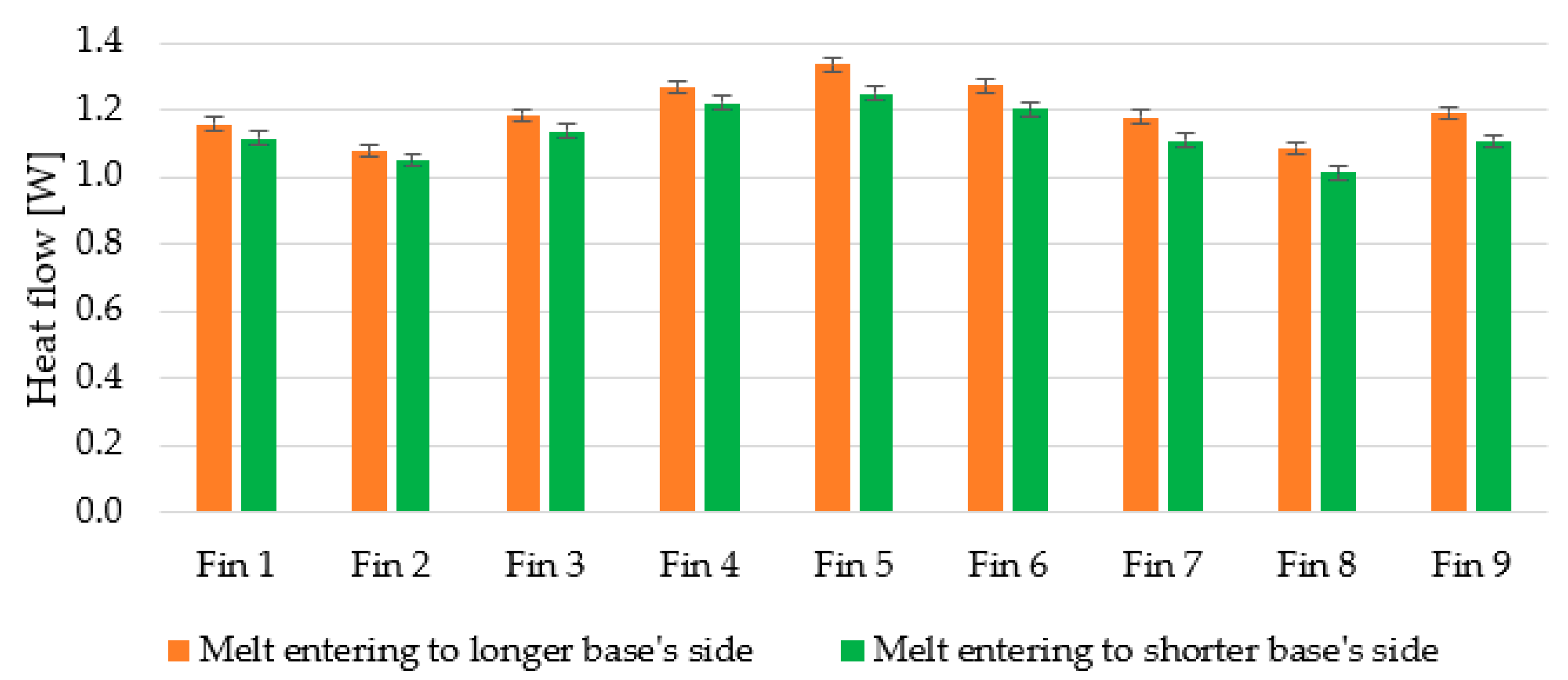

| Default Position [°C] | Upside-Down [°C] | Position Difference [°C] | |
|---|---|---|---|
| Melt entrance along the longer base’s edge (parallel to fins) | 72.3 | 69.5 | 2.8 |
| Melt entrance along the shorter base’s edge (perpendicular to fins) | 76.1 | 76.2 | 0.1 |
| Melt Entry Difference [°C] | 3.8 | 6.7 |
| LONG—DEFAULT | LONG—UPSIDE-DOWN | Difference |
|---|---|---|
| 100% | 94.9% | 5.1% |
| SHORT—UPSIDE-DOWN | LONG—UPSIDE-DOWN | |
| 100% | 87.4% | 12.6% |
| SHORT—DEFAULT | LONG—DEFAULT | |
| 100% | 92.5% | 7.5% |
Publisher’s Note: MDPI stays neutral with regard to jurisdictional claims in published maps and institutional affiliations. |
© 2021 by the authors. Licensee MDPI, Basel, Switzerland. This article is an open access article distributed under the terms and conditions of the Creative Commons Attribution (CC BY) license (https://creativecommons.org/licenses/by/4.0/).
Share and Cite
Guzej, M.; Zachar, M.; Kominek, J.; Kotrbacek, P.; Brachna, R. Importance of Melt Flow Direction during Injection Molding on Polymer Heat Sinks’ Cooling Efficiency. Polymers 2021, 13, 1186. https://doi.org/10.3390/polym13081186
Guzej M, Zachar M, Kominek J, Kotrbacek P, Brachna R. Importance of Melt Flow Direction during Injection Molding on Polymer Heat Sinks’ Cooling Efficiency. Polymers. 2021; 13(8):1186. https://doi.org/10.3390/polym13081186
Chicago/Turabian StyleGuzej, Michal, Martin Zachar, Jan Kominek, Petr Kotrbacek, and Robert Brachna. 2021. "Importance of Melt Flow Direction during Injection Molding on Polymer Heat Sinks’ Cooling Efficiency" Polymers 13, no. 8: 1186. https://doi.org/10.3390/polym13081186
APA StyleGuzej, M., Zachar, M., Kominek, J., Kotrbacek, P., & Brachna, R. (2021). Importance of Melt Flow Direction during Injection Molding on Polymer Heat Sinks’ Cooling Efficiency. Polymers, 13(8), 1186. https://doi.org/10.3390/polym13081186







